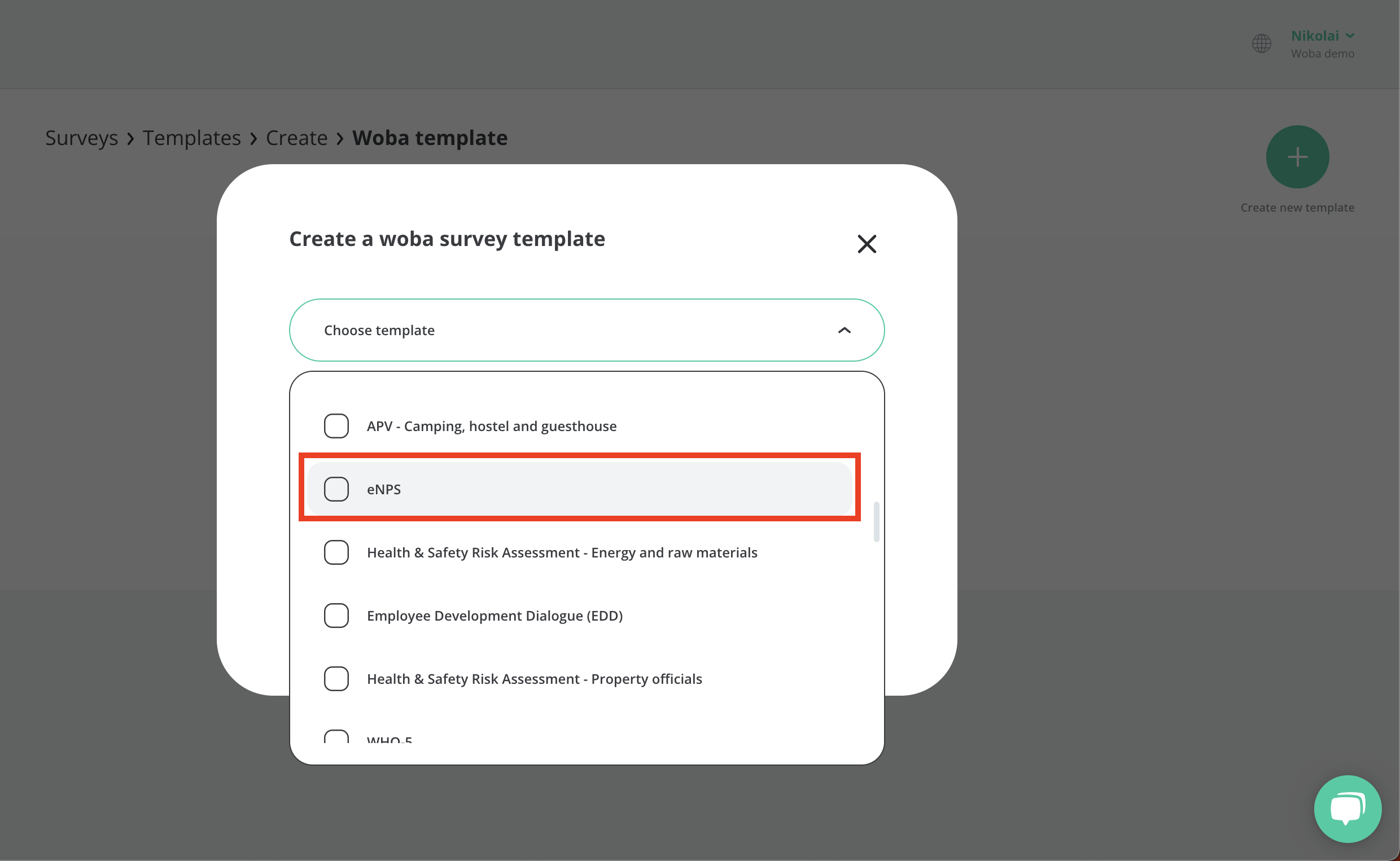Employee Net Promoter Score (eNPS)
A guide on Employee Net Promoter Score (eNPS)
eNPS stands for "Employee Net Promoter Score" and is a simple but effective method for measuring how loyal your employees are. It is quick and easy to create an eNPS survey in Woba. This article will touch on the following points about the Employee Net Promoter Score:
- What is eNPS?
- How do i create an eNPS survey in Woba?
- How is eNPS calculated?
- What can eNPS be used for?
What is eNPS?
In short, eNPS or Employee Net Promoter Score measures the degree of employee engagement and well-being in a company, by simply asking a single question, with an accompanying in-depth comment:
"On a scale of 0-10, how likely is it that you would recommend our workplace to others?"


It is especially easy to get an overview of eNPS, in the Overview on the front page of Woba Analytics. In the Overview you can see the development over time on a graph, benchmark with previous eNPS surveys and much more.